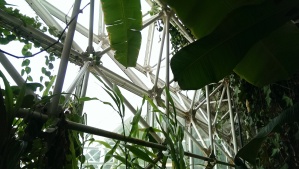Last weekend, I drove from Tucson down to a long term ecology research site near Portal, Arizona. It’s a site started by Jim Brown in 1977 with a series of fenced plots that look at the effect of rodents on the plants of the Chihuahuan Desert, now run by Morgan Ernest’s lab. It looks substantially different than the Sonoran Desert that I’m used to, but still spectacular laid out at the foot of the Chiricahua Mountains.

I was helping out with the monthly rodent census at the sites. Researchers from Utah State University travel to the Portal Site for a long weekend every month to live trap and mark small mammals. I was also interested in comparing camera trap encounter rates with live trap rates as the seasonal and inter-annual population density fluctuations occur, so I set up my cameras, after dark, on the first night I got there. (Yes, I also wanted to see if the pocket mice near Portal dance. I suspect they do.)

While I was setting up the cameras in the dark, I thought I heard the faint squeal of a truck’s breaks. It lasted maybe two seconds. But no headlights were visible in the dark San Simon valley. I heard it again and again as I walked around a quarter hectare plot, setting out cameras.
It turns out the squeal is actually an itty bitty howl, emitted by the only genus of carnivorous mice. Yes, if you thought mice were scary before, just think of an aggressively hunting mouse standing on its hind legs to howl upward at the sky. They have short, stubby tails, and typically eat, well, grasshoppers, I guess. It is grasshopper season in Portal, and the horse-lubbers especially cover every surface, and are slow to move or respond. Easy prey.

However, one of the other grad students had a story of releasing a Bailey’s pocket mouse (an animal weighing about 20 grams), and seeing a recently released grasshopper mouse (about 25 grams – not much larger!) seize it by the throat and drag it down a hole. They must be at least somewhat omnivorous (eating things other than meat), because we caught several in the Sherman live traps that were baited with millet seed.

Wikipedia claims they have home ranges of approximately 28 acres and are very territorial, but we caught three in less than a quarter hectare. But they certainly move differently than the pocket mice and kangaroo rats that made up the bulk of the captures. Those others (in family Heteromyidae) are boing-y, bouncing around, like, well, a kangaroo. The grasshopper mice, when released, scurried off through the grass in a more fluid, slinky way, like a cat or a ferret, using all four feet and close to the ground.
I plan to pick up my cameras next week. I look forward to seeing what video – and audio – I have of the unique species there.








